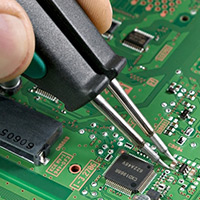

Understanding Beveled Low-E Glass Enhancing Aesthetics and Energy Efficiency
In the realm of modern architecture and design, glass plays an irreplaceable role, serving not only functional purposes but also contributing to the aesthetic appeal of buildings. Among the various types of glass available, beveled low-emissivity (low-E) glass stands out for its unique combination of beauty and energy efficiency. This article delves into the characteristics, benefits, and applications of beveled low-E glass, demonstrating why it is a popular choice for both residential and commercial projects.
What is Beveled Low-E Glass?
Beveled low-E glass is a type of glass that features angled edges, creating a distinct visual effect that can enhance the overall appearance of windows, doors, and other glass fixtures. The term “low-E” refers to the low emissivity coating applied to the glass surface. This special coating reduces the amount of infrared and ultraviolet light that can pass through the glass, while still allowing visible light to enter. The beveled edges not only add an elegant touch but also help refract light, creating stunning visual reflections and enhancing the natural illumination of interior spaces.
Aesthetic Appeal
Understanding Beveled Low-E Glass Enhancing Aesthetics and Energy Efficiency
Energy Efficiency

Beyond aesthetics, the practicality of beveled low-E glass is evident in its energy-saving properties. The low-E coating markedly improves the insulation performance of the glass, helping to maintain comfortable indoor temperatures year-round. During hot summer months, it reflects heat away from the interior, reducing the reliance on air conditioning. Conversely, in winter, it helps retain indoor warmth by minimizing heat loss. As a result, buildings can achieve significant energy savings, which not only lowers utility bills but also contributes to a smaller carbon footprint.
UV Protection
Another critical benefit of beveled low-E glass is its ability to block harmful ultraviolet (UV) rays. These rays can cause fading in furniture, artworks, and flooring over time. By incorporating low-E glass, homeowners and business owners can protect their interiors from UV damage while still enjoying abundant natural light. This is particularly important for spaces that house valuable or sensitive items, such as galleries, museums, or even living areas with cherished collectibles.
Applications
The applications of beveled low-E glass are vast and varied. In residential settings, it is commonly used in high-end windows, sliding doors, and decorative panels, allowing homeowners to enjoy both beauty and function. In commercial architecture, this type of glass can enhance storefronts, office partitions, and curtain walls, providing an inviting ambiance for customers and employees alike. Architects and designers gravitate towards beveled low-E glass due to its flexibility in design, allowing for creative expression without compromising on performance.
Conclusion
Beveled low-E glass serves as a prime example of how functionality and design can harmoniously coexist in architectural applications. Offering enhanced aesthetics, significant energy efficiency, and protection against UV damage, this specialized glass is reshaping how we think about windows and glass facades. As more architects and builders recognize the benefits of integrating beveled low-E glass into their projects, we can expect to see its influence grow, contributing to more sustainable, beautiful, and innovative living and working environments. Whether it’s a sleek modern home or a bustling commercial space, beveled low-E glass stands as a testament to the evolving landscape of architectural glass technology.